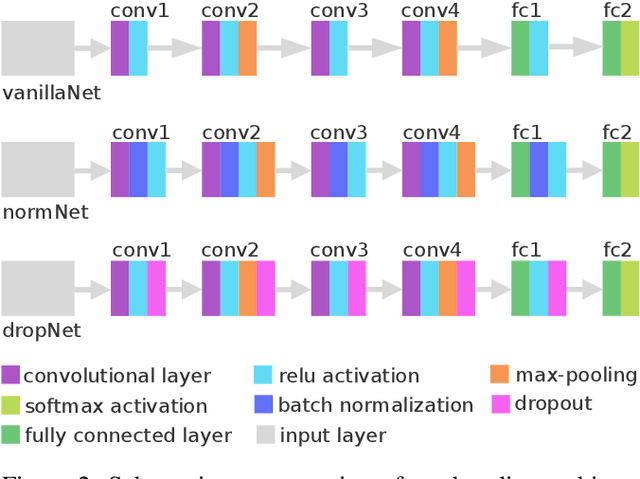Karim Huesmann
The Impact of Activation Sparsity on Overfitting in Convolutional Neural Networks
Apr 13, 2021



Abstract:Overfitting is one of the fundamental challenges when training convolutional neural networks and is usually identified by a diverging training and test loss. The underlying dynamics of how the flow of activations induce overfitting is however poorly understood. In this study we introduce a perplexity-based sparsity definition to derive and visualise layer-wise activation measures. These novel explainable AI strategies reveal a surprising relationship between activation sparsity and overfitting, namely an increase in sparsity in the feature extraction layers shortly before the test loss starts rising. This tendency is preserved across network architectures and reguralisation strategies so that our measures can be used as a reliable indicator for overfitting while decoupling the network's generalisation capabilities from its loss-based definition. Moreover, our differentiable sparsity formulation can be used to explicitly penalise the emergence of sparsity during training so that the impact of reduced sparsity on overfitting can be studied in real-time. Applying this penalty and analysing activation sparsity for well known regularisers and in common network architectures supports the hypothesis that reduced activation sparsity can effectively improve the generalisation and classification performance. In line with other recent work on this topic, our methods reveal novel insights into the contradicting concepts of activation sparsity and network capacity by demonstrating that dense activations can enable discriminative feature learning while efficiently exploiting the capacity of deep models without suffering from overfitting, even when trained excessively.
Exploiting the Full Capacity of Deep Neural Networks while Avoiding Overfitting by Targeted Sparsity Regularization
Feb 21, 2020



Abstract:Overfitting is one of the most common problems when training deep neural networks on comparatively small datasets. Here, we demonstrate that neural network activation sparsity is a reliable indicator for overfitting which we utilize to propose novel targeted sparsity visualization and regularization strategies. Based on these strategies we are able to understand and counteract overfitting caused by activation sparsity and filter correlation in a targeted layer-by-layer manner. Our results demonstrate that targeted sparsity regularization can efficiently be used to regularize well-known datasets and architectures with a significant increase in image classification performance while outperforming both dropout and batch normalization. Ultimately, our study reveals novel insights into the contradicting concepts of activation sparsity and network capacity by demonstrating that targeted sparsity regularization enables salient and discriminative feature learning while exploiting the full capacity of deep models without suffering from overfitting, even when trained excessively.
 Add to Chrome
Add to Chrome Add to Firefox
Add to Firefox Add to Edge
Add to Edge